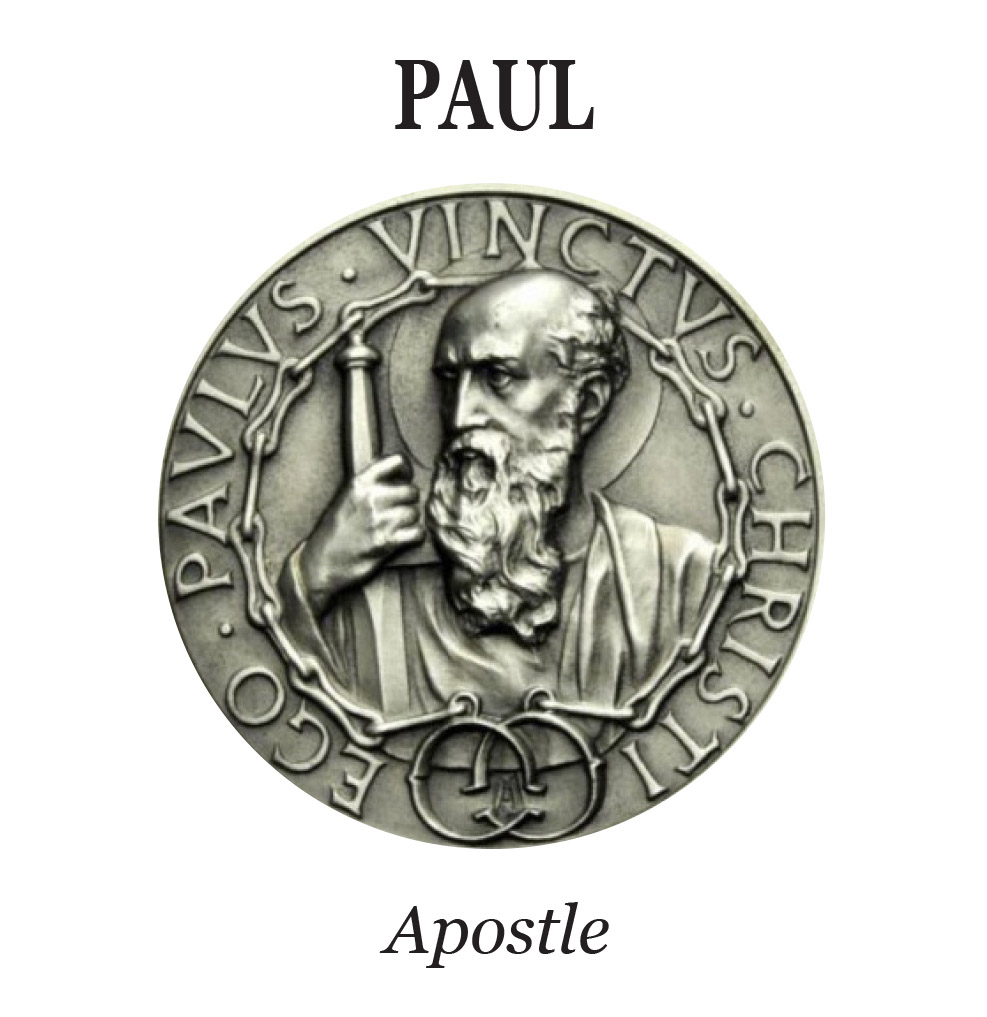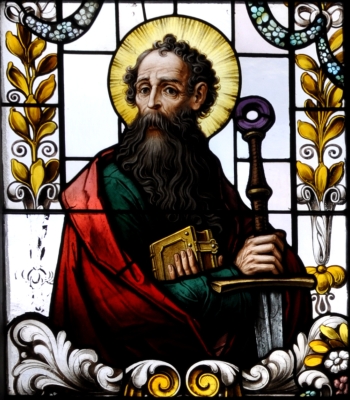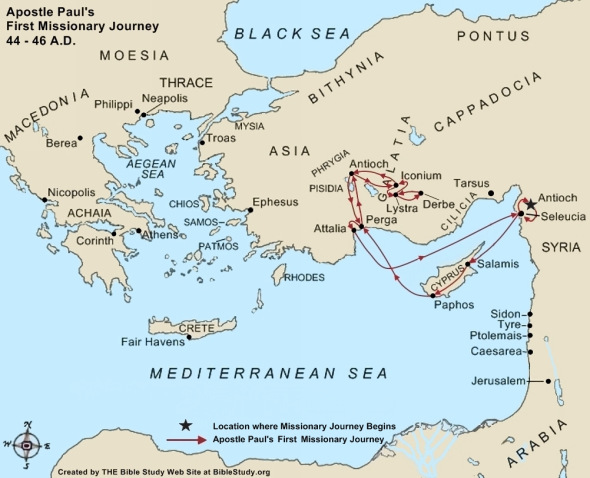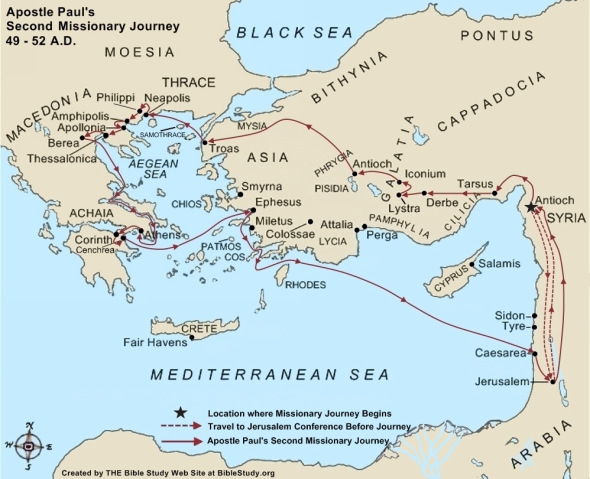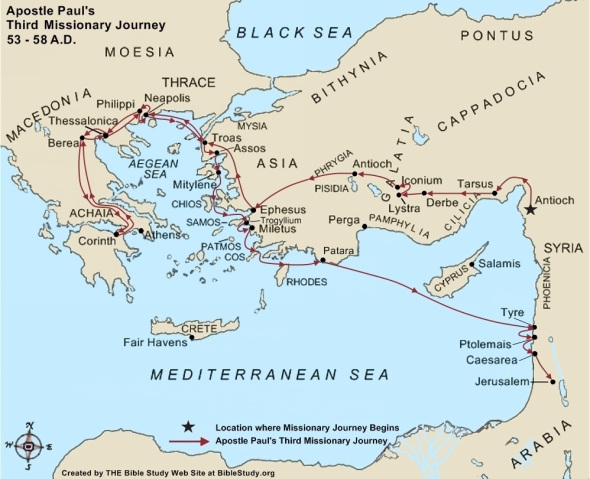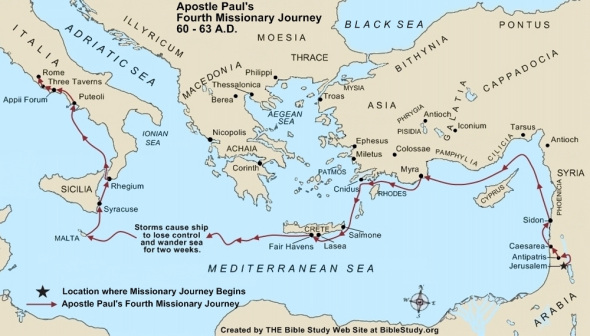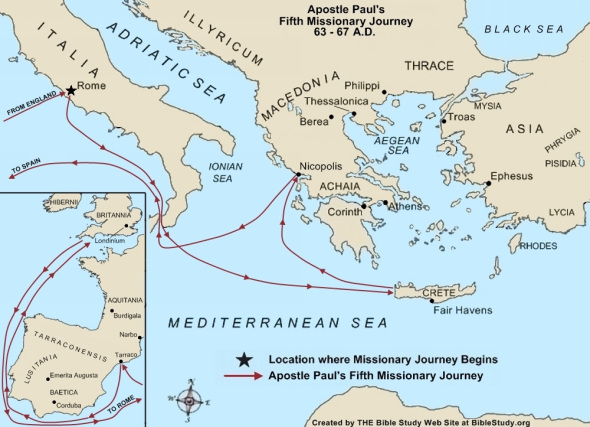Paul was an apostle (though not one of the Twelve Apostles) who taught the gospel of Christ to the first-century world. Paul is one of the most important figures of the Apostolic Age. He used his status as both a Jew and a Roman citizen to his advantage in his ministry to both Jewish and Roman audiences.
Paul founded several churches in Asia Minor and Europe. His impact on Christianity is enormous. His letters in the New Testament are very influential in Christian thinking. During his ministry he wrote 14 books of the Bible and carried out 5 missionary journeys. For his strong devotion to God he spent 5 of his ministry years in prison.
.
Paul was born in Tarsus (south-central Turkey). He was of the tribe Benjamin, and was formerly called “Saul,” and studied under Gamaliel the Elder at the Rabbinical school in Jerusalem. Saul was a Pharisee and a persecutor of Christians.
.
Martyrdom of Saint Etienne 34 AD
(the first Christian martyr)
According to writings in the New Testament, Saul of Tarsus was dedicated to the persecution of the early disciples of Jesus in the area of Jerusalem, including the stoning of the first Christian martyr, Saint Etienne.
NOTE: Etienne was a deacon in the early church in Jerusalem who taught the word of God in the synagogues. He was accused of blasphemy. At his trial he made a long speech denouncing the Jewish authorities who were sitting in judgment of him and was then stoned to death.
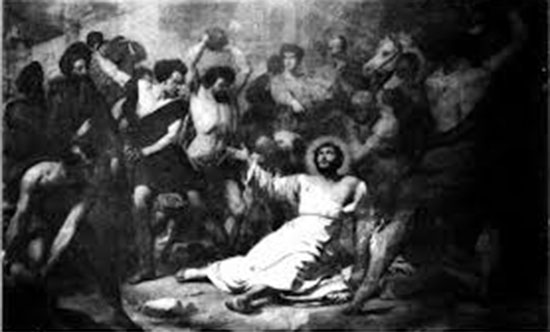 Martyrdom of Saint Etienne witnessed by Saul of Tarsus
Martyrdom of Saint Etienne witnessed by Saul of Tarsus
.
Paul’s Conversion
In the book of Acts, while Saul was traveling on the road from Jerusalem to Damascus on a mission to “bring them which were there bound unto Jerusalem,” the resurrected Jesus appeared to him in a great light.
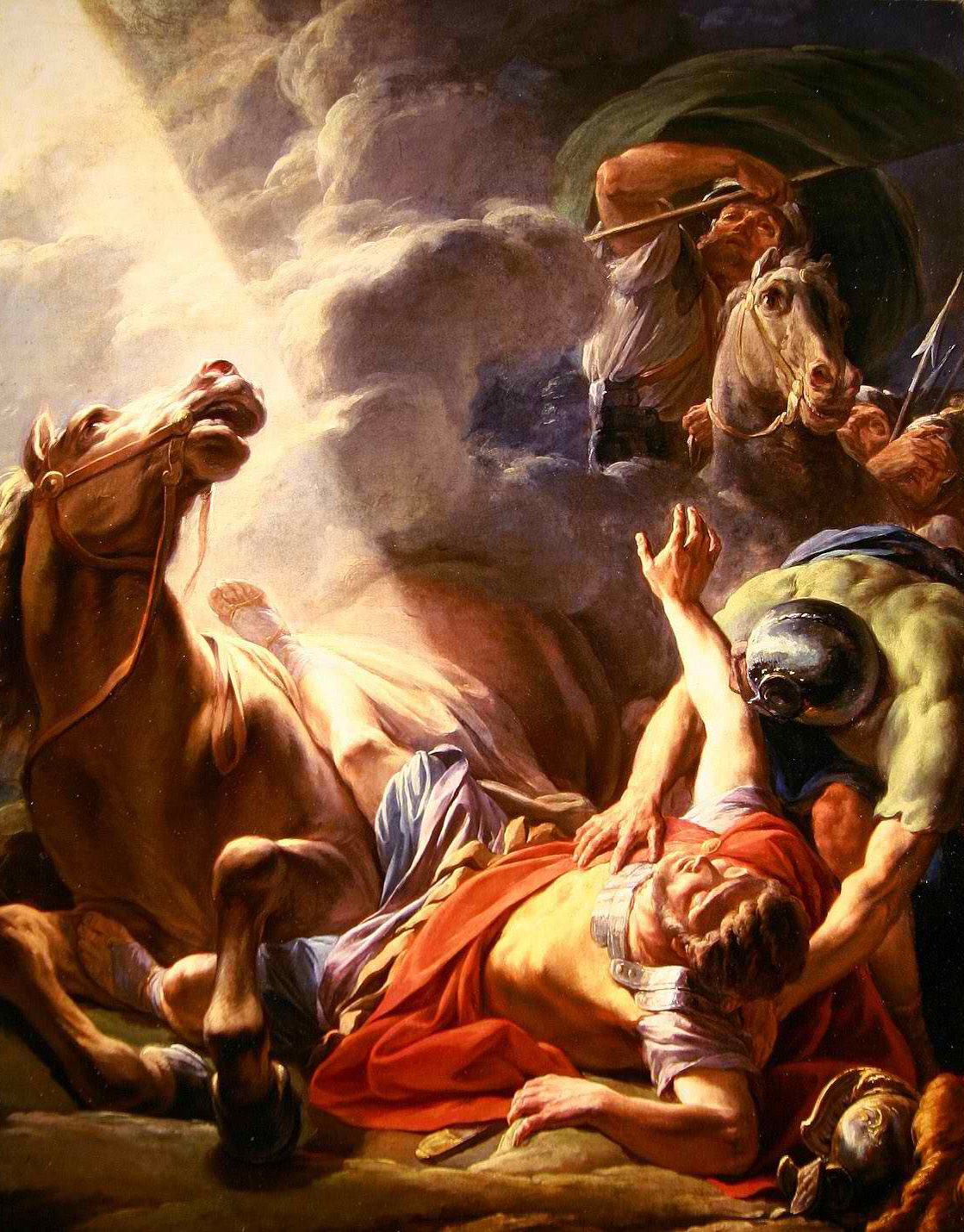 The Conversion of St. Paul, by Nicolas-Bernard Lepicie, c. 1767
The Conversion of St. Paul, by Nicolas-Bernard Lepicie, c. 1767
Saul was struck blind, but after three days his sight was restored by Ananias of Damascus:
Acts 9:11-16
11 The Lord told him, “Go to the house of Judas on Straight Street and ask for a man from Tarsus named Saul, for he is praying. 12 In a vision he has seen a man named Ananias come and place his hands on him to restore his sight.”
13 “Lord,” Ananias answered, “I have heard many reports about this man and all the harm he has done to your holy people in Jerusalem. 14 And he has come here with authority from the chief priests to arrest all who call on your name.”
15 But the Lord said to Ananias, “Go! This man is my chosen instrument to proclaim my name to the Gentiles and their kings and to the people of Israel. 16 I will show him how much he must suffer for my name.”
.
Saul began to preach that Jesus of Nazareth is the Jewish Messiah and the Son of God.
Saul made his first visit (sometime from A.D. 33 to 38) to Jerusalem after his conversion. The Church there, remembering his former persecutions, was slow to believe in the reality of his conversion. Barnabas, who converted to Christianity shortly after the Pentecost and immediately sold his property and gave the proceeds to the Church, was the first to accept Saul’s conversion as genuine.
.
Barnabas takes Saul to the Apostles
Acts 9:26-27
26 When he came to Jerusalem, he tried to join the disciples, but they were all afraid of him, not believing that he really was a disciple. 27 But Barnabas took him and brought him to the apostles. He told them how Saul on his journey had seen the Lord and that the Lord had spoken to him, and how in Damascus he had preached fearlessly in the name of Jesus. 28 So Saul stayed with them and moved about freely in Jerusalem, speaking boldly in the name of the Lord. 29 He talked and debated with the Hellenistic Jews, but they tried to kill him. 30 When the believers learned of this, they took him down to Caesarea and sent him off to Tarsus.
.
The Church in Antioch
After the killing of Saint Etienne the followers of Jesus scattered and traveled as far as Phoenicia, Cyprus and Antioch, spreading the word among Jews. Then some of them began to speak to the Greeks about Jesus, and many believed. The Church in Jerusalem heard this news and sent Barnabas to Antioch. Barnabas saw for himself what the grace of God had done.
Acts 11:25-26
25 Then Barnabas went to Tarsus to look for Saul, 26 and when he found him, he brought him to Antioch. So for a whole year Barnabas and Saul met with the church and taught great numbers of people. The disciples were called Christians first at Antioch.
.
Missionary Journey of Paul and Barnabas 44 – 46 AD
In the late Spring of 44 A.D. Saul, and Barnabas were ordained as apostles:
Acts 13:1-3
1 Now in the church at Antioch there were prophets and teachers: Barnabas, Simeon called Niger, Lucius of Cyrene, Manaen (who had been brought up with Herod the tetrarch) and Saul. 2 While they were worshiping the Lord and fasting, the Holy Spirit said, “Set apart for me Barnabas and Saul for the work to which I have called them.” 3 So after they had fasted and prayed, they placed their hands on them and sent them off.
.
Saul now chose to use his Roman name “Paul,” because it was a name more familiar to the Gentiles. Paul, Barnabas and John Mark traveled to Seleucia then sailed to Salamis, the main city and seaport of the island of Cyprus. Cyprus is where Barnabas was born and raised. They preached the gospel in several synagogues then walked on foot to Paphos where the island’s Roman governor wanted to meet with them to hear the word of God. The governor believed and was converted.
Then they sailed to Perga. John Mark abruptly leaves them and returns to Jerusalem. They travel on to Antioch in Pisidia. Then to Antioch where Paul preached a powerful message in the synagogue, and after the Gentiles in the audience wanted to hear more the following week. On the next Sabbath almost the entire city came to hear the word of God.
Some envious Jews spoke against the gospel, rejecting Jesus as the Messiah. Paul and Barnabas were both expelled from the area.
Later in Iconium Paul preaches powerfully at the synagogue and many Greeks and Jews are converted. Paul performs signs and wonders to confirm what he says. Some do not believe. Jewish leaders conspire to have them stoned to death. They are warned and flee to Lystra, where Paul miraculously heals a crippled man.
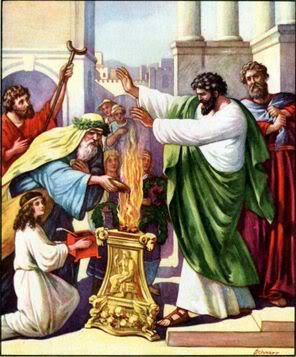 Paul and Barnabas in the synagogue at Iconium
Paul and Barnabas in the synagogue at Iconium
Jews succeed in turning people against Paul and Barnabas. They stoned Paul and dragged his nearly dead body out of the city. He was revived and returned to the city to get Barnabas. They preach the gospel in more cities and then sail back to where their missionary journey started.
Paul and Barnabas stay in Antioch (Syria) for almost three years – from the fall of 46 A.D. to the late summer of 49 A.D. (Acts 14:26-28)
,
Paul’s 2nd Missionary Journey without Barnabas
49 – 52 AD
In a heated argument over whether John Mark could join them again, Paul and Barnabas go their separate ways. Paul takes Silas with him to Tarsus. They travel on to Derbe and Lystra where they meet Timothy, who becomes Paul’s traveling companion.
Paul desires to preach the gospel in Asia but it does not seem to be God’s will (Acts 16:6). They travel on to Troas where Luke, the writer of the book of Acts, joins them. They take a ship to Macedonia. Paul casts out a demon in Philippi and Paul and Barnabas are arrested, beaten and put in prison (Acts 16:19-24). A miraculous earthquake causes all the cell doors to open and the prisoners are free.
Paul, Silas, Timothy and Luke travel to Thessalonica where Paul visits a Jewish synagogue for three consecutive Sabbaths and explains why Jesus is the Old Testament prophesied Savior of Mankind. Many believe but some Jews, envious of the gospel success, form a mob and start a riot.
Paul goes on to Athens preaching the gospel, then to Corinth. He stays and teaches in Corinth for a year and a half. Then he boards a ship and travels to Ephesus where he preaches in a synagogue. He then sails to Caesarea and returns to Jerusalem and then travels back and forth to Antioch.
.
Paul’s 3rd Missionary Journey
53 – 58 AD
After five years of traveling and preaching the gospel, returning to many of the cities that he visited on his 2nd missionary journey, Paul returns to Jerusalem in the Spring of 58 AD.
In Jerusalem Paul visits James the lesser and goes to the temple with some Jewish converts. There Paul encounters a group of Jews who hate him and accuse him of wrongdoing. A riot breaks out and the mob drags Paul out of the temple, beating him. Roman soldiers get involved. But before they take him away Paul asks to speak to the mob. His speech only creates more havoc. So the Roman soldiers take him to be scourged. When the Roman centurion discovers that Paul is a Roman citizen he cancels the scourging.
The next day Paul is released and brought before the Sanhedrin. Paul has a vision:
Acts 23:11
11 The following night the Lord stood near Paul and said, “Take courage! As you have testified about me in Jerusalem, so you must also testify in Rome.”
Some forty Jews wanted Paul killed. They conspire about his murder, but the Romans are informed. Paul is soon escorted out of the city, at night, by 200 Roman soldiers (Acts 23:23-24) who take him through Antipatris to Caesarea where his case can be heard.
In Caesarea Paul is a Roman prisoner from the summer of 58 AD to the fall of 60 AD. He defends himself and the Governor hears the accusations against him with no proof. Paul requests that his case be heard in Rome.
.
Paul’s 4th Missionary Journey
60 – 63 AD
Paul’s 4th missionary journey is his journey as a prisoner. He is taken to Rome to be tried with other prisoners and on the way his ship is shipwrecked near the island of Malta where Paul stays for 3 months, treated very kindly by the natives, and heals many on the island suffering from disease. The prisoners continue their journey to Rome.
In Rome Paul is able to live by himself guarded only by a Roman soldier (Acts 28:16). He could receive visitors and continued to preach the Gospel (Acts 28:17-31). He also had the opportunity to speak with Jewish religious leaders in Rome (Acts 28:17-29).
.
Paul’s 5th and Final Missionary Journey
63- 67 AD
In the Spring of 63 AD in Rome Paul is acquitted of the charges against him and is set free. He sails from Rome to the island of Crete in order to meet with Titus (Titus 1:5). He then leaves Titus in Crete and sails to Nicopolis (Titus 1:5, 3:12). From Nicopolis he writes the New Testament books of 1Timothy and Titus.
Paul continues to spread the gospel by traveling to Spain. There is evidence that Paul traveled as far as Britain.
Paul returns to Rome and is imprisoned. While a prisoner he writes the book of 2Timothy, which will be his last.
.
Beheading of Saint Paul
Paul was beheaded, under Roman Emperor Nero, around May or June of 68 AD. He was about 66 years old. Nero was the first emperor of the Roman Empire to actively persecute Christians. The persecutions continued until 313 AD.
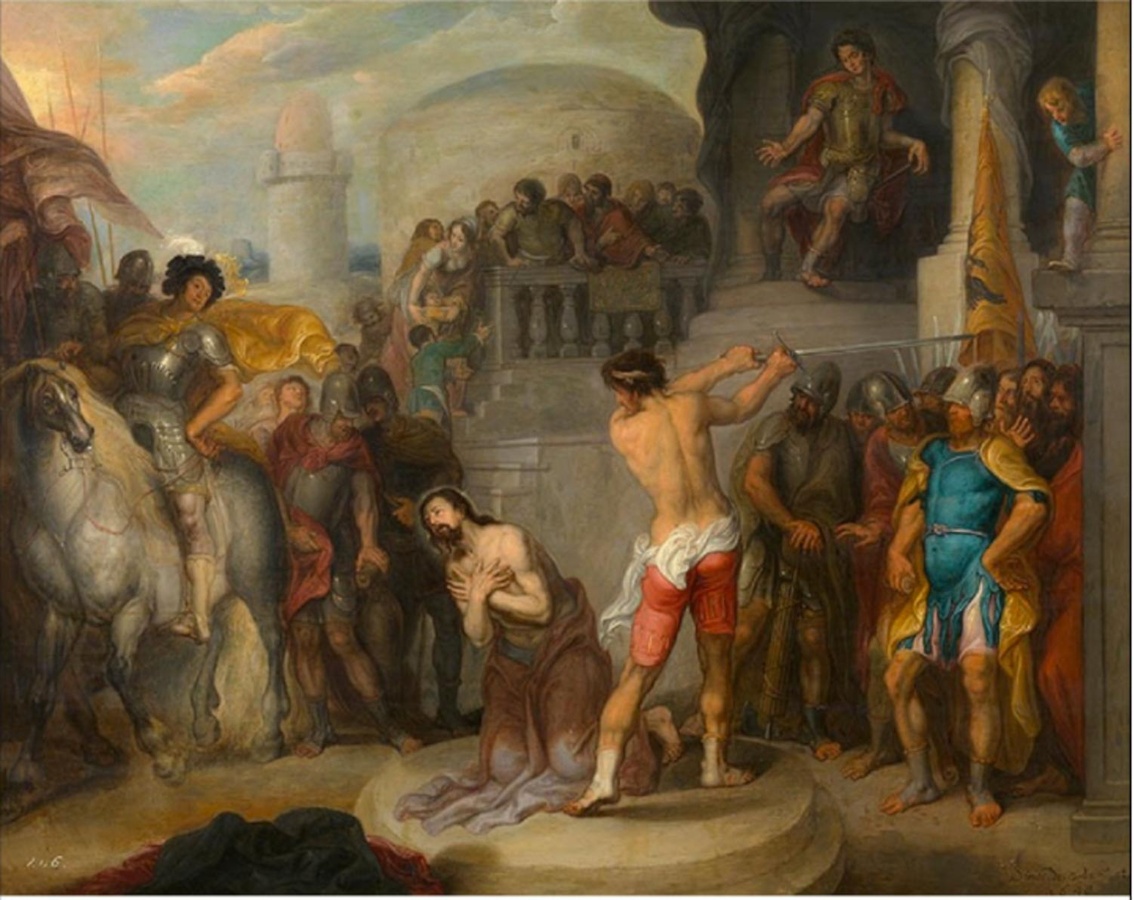 The Beheading of St. Paul by Simon de Vos, c. 1640
The Beheading of St. Paul by Simon de Vos, c. 1640
.
Remains of Saint Paul
Tradition holds that Saint Paul the Apostle was buried in a vineyard over which the Emperor Constantine built a basilica in 324 AD.
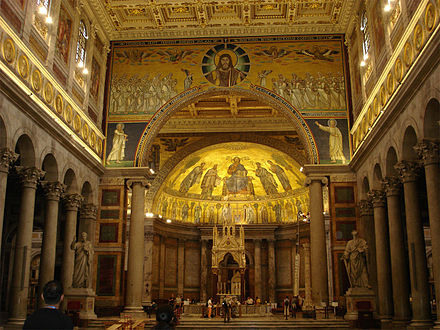 Basilica of Saint Paul Outside the Walls in Rome houses the tomb of Saint Paul the Apostle
Basilica of Saint Paul Outside the Walls in Rome houses the tomb of Saint Paul the Apostle
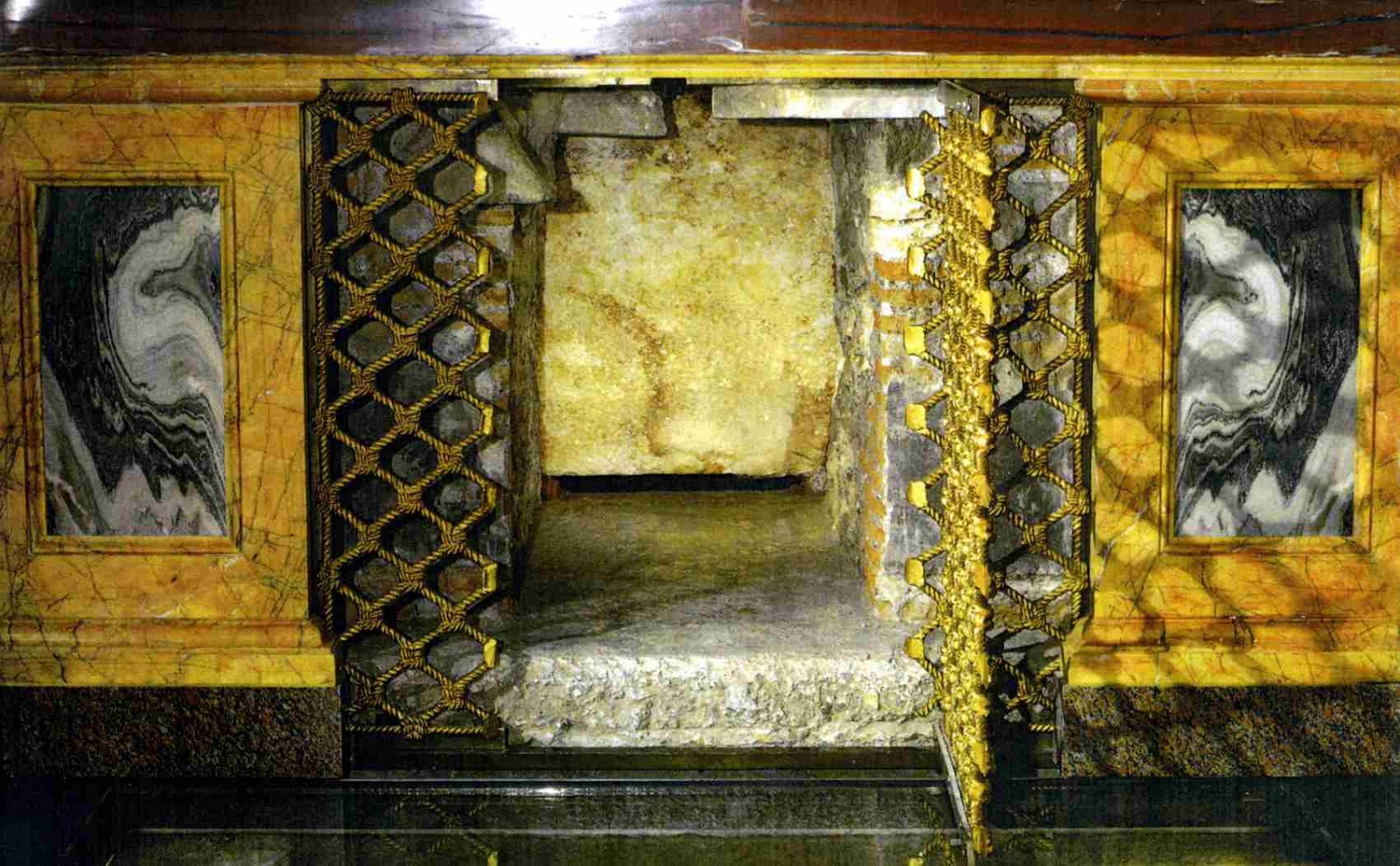 Tomb of Saint Paul the Apostle
Tomb of Saint Paul the Apostle
.
Paul was a writer and Christian theologian and is known as the “Apostle of the Gentiles.” He is the patron saint of writers, publishers, authors and public relations work, because of his numerous writing contributions to churches he founded or visited.
Saint Paul’s feast day is June 29th.
.
The Rights of an Apostle
1 Corinthians 9:16
(a letter from Paul)
For if I preach the gospel,
I have no reason for boasting,
because I am compelled to do this.
Woe to me if I do not preach the gospel!
.
![]() Saint Paul Icon in Ephesus, c. 4th century
Saint Paul Icon in Ephesus, c. 4th century
This icon was found on the wall of a cave in Ephesus and is most likely the oldest painting of Saint Paul in existence.
.
Below is part of one of the most famous letters of Paul to the Corinthians about LOVE:
1 Corinthians 13:4-7
(a letter from Paul)
4 Love is patient, love is kind. It does not envy, it does not boast, it is not proud. 5 It does not dishonor others, it is not self-seeking, it is not easily angered, it keeps no record of wrongs. 6 Love does not delight in evil but rejoices with the truth. 7 It always protects, always trusts, always hopes, always perseveres.

